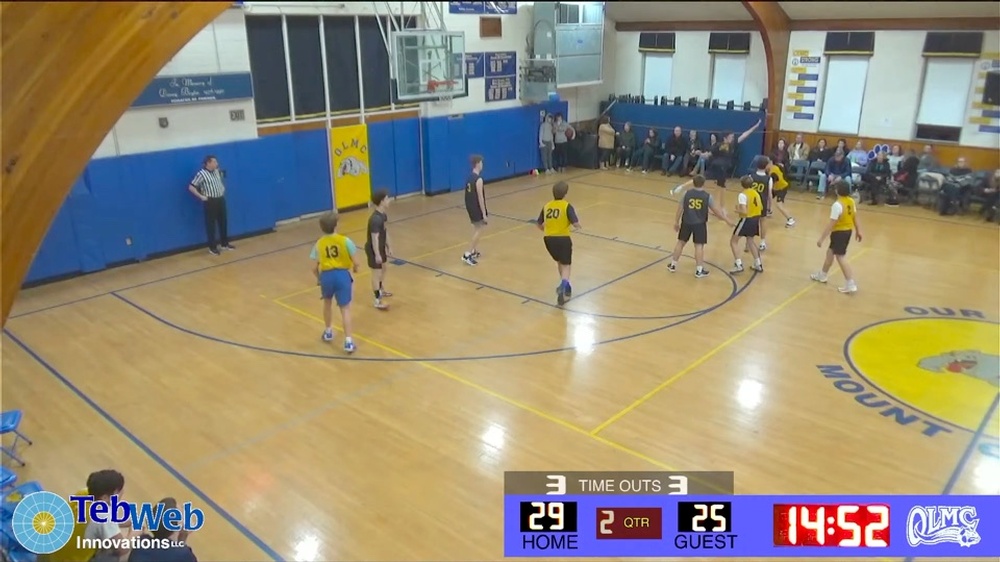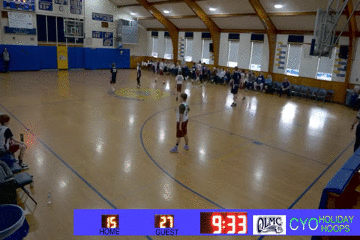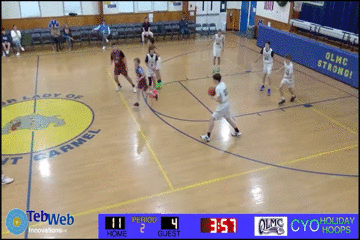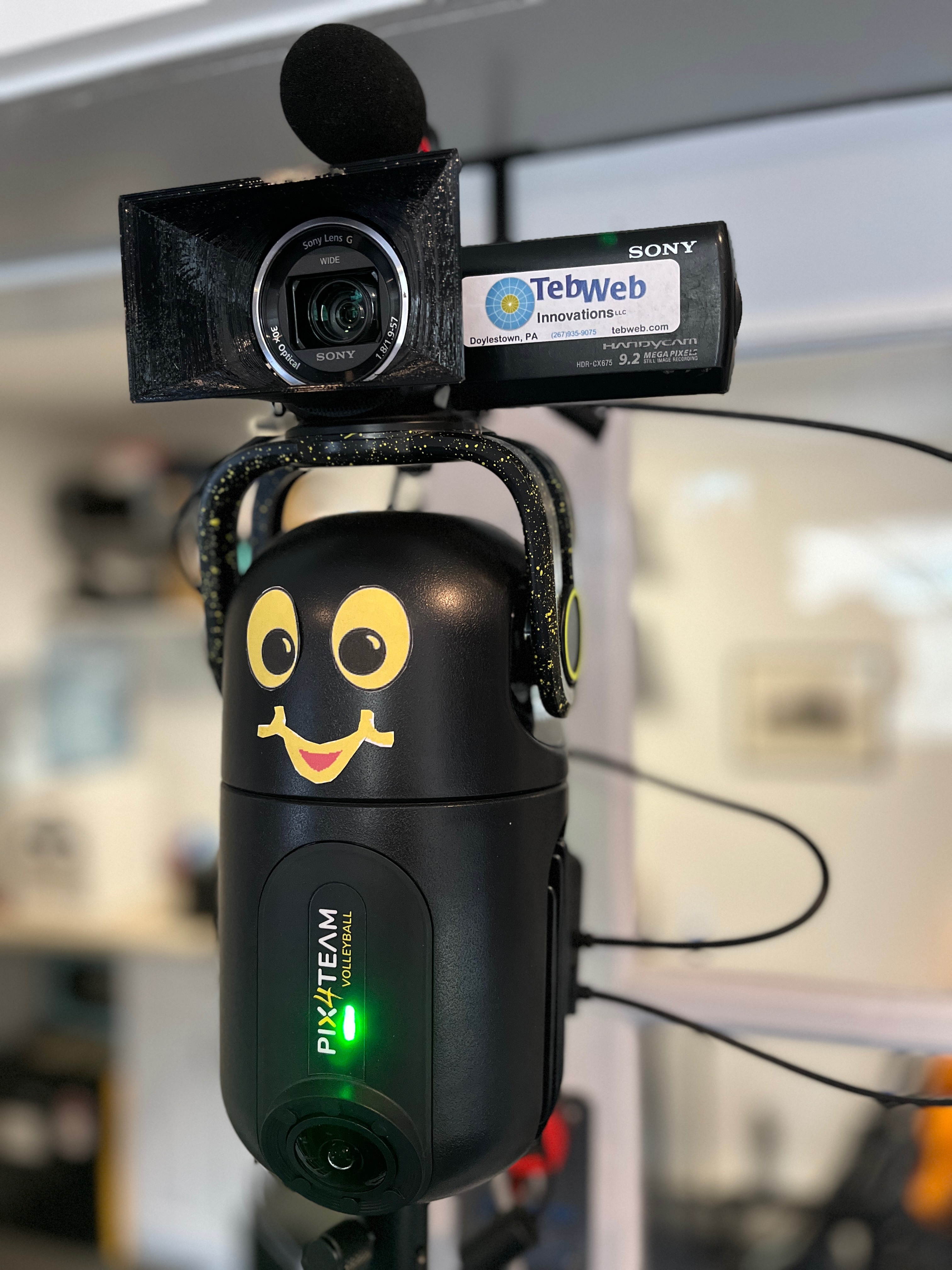
Artificial Intelligence Guiding Sports Live Streams
- TebWeb Innovations LLC
Categories: Automated Live Stream , Robotic Camera , Sports Live Stream
It started with a client--a local Catholic School athletic program. During the holidays, they host a regional grade school basketball tournament. It's a big deal--over 7 days they play 73 games with 59 teams from 19 schools. 10-13 hours of basketball each day! The small school gym does not have any bleachers, so in person attendance is minimal. In the past, they have live streamed the tournament with just a lock-down shot from an iPad. In 2022, they came to me to ask if I could improve on this. Being only 2 weeks out, I came up with a quick system--a lock down camera, and an iPad camera shooting the scoreboard. I fed these views back to my office to an RTMP server, and used OBS Studio to create a "score bug." Best I could do on short notice. It worked, and I was amazed to find an average of 600-900 views for each day---with a static wide shot?

|

|
Moving into 2023, the school wanted to work on a better system, and one that could be permanent. It also had to be easy to run with minimal involvement from the school. "Start feed, end feed." After researching AI driven camera systems, I settled on a French company that produces the pix4team robotic camera system. I was impressed with the videos, and liked how you can adapt it with a regular camera of choice. The AI camera was just part of it. I needed to create a system to control it remotely. In the broadcast sports world, it is known as a "REMI." (REMote Integration). I needed to create my own small scale REMI.
TECH TALK TIME!
If the heart of the system is the robotic camera, the brains of the live stream are from a Mac Mini M1, which sits on a shelf of other network gear in a utility room near the gym. For the initial installation, I ran CAT6 cable for the robot and scoreboard camera, a Tongveo PTZ camera that can be PoE powered. It was crucial that I can connect to and control the entire system via a remote desktop connection to the Mac Mini. The Mac would use OBS Studio to combine sources and create the feed--and stream it to the world. One problem I had to overcome was that currently, the robot camera is only configured and controlled through mobile devices, Android or Apple iOS. I settled on using a cheap Android tablet. Thanks to GitHub, I found a utility that would allow me to screen share the tablet to the Mac desktop. After installing the utility, I connect the tablet via USB, and turn on Android Developer and "USB Debugging." Sending a command to Terminal activates the tablet screen share, and also full mouse control from the Mac. I created an AppleScript to launch the Terminal command with a click. This has proven to work beautifully--and has been flawless! My hope is that the pix4team developers will be able to make their iOS app fully functional on the M1/M2 Macs. Until then, this arrangement is working great.

|

|
A Real Scoreboard Bug
I come from a network sports background. So I like to do my best to mimic the look of network TV as much as I can. After all, it is a standard, and people are used to seeing how sports are presented on TV. The scoreboard is an important element. Utilizing a 2nd camera to point at the gym scoreboard, I created the lower screen "bug" to show score, time, even time outs per team. OBS lets me crop and move different scoreboard elements to create the graphic.
|
|
|
The other part of network TV sports I borrowed from was in the advertising. I have set up a few options for integrating sponsorships (aka revenue generation) into the live streams. I integrated the "Commercial Two Box," now commonplace on network sports. It allows an ad to run, while still viewing the game. Since this stream runs automated, an ad runs at a certain time schedule, regardless of where the game is. Instead of abruptly cutting away from the middle of game play--the game continues in a second box. Viewers are used to this now, and it helps the school athletic programs to realize some income for their programs. Example below.
OBS Studio is an extremely powerful and versatile program for live streaming. This open source freeware drives much of the internet's live stream productions. It is nearly infinitely configurable via scripts and plug-ins. One plug-in I make use of is Advanced Scene Switcher. This allows me to create routines (macros) to automate tasks during the live stream. With it I can cleanly start & end the stream, add in sponsor logos and commercials, and flip the "Time Outs" on the scoreboard.

Combining all of these tools together, I have created a fully automated and remotely controlled system, ready to live stream a school's sports contests to a broader audience. It is economical and logistically simple for even the smallest sports programs to use. Contact TebWeb Innovations to see how we can help make live streaming a reality for you!

 (267) 935-9075
(267) 935-9075 innovate@tebweb.com
innovate@tebweb.com Client Availability Calendar
Client Availability Calendar
